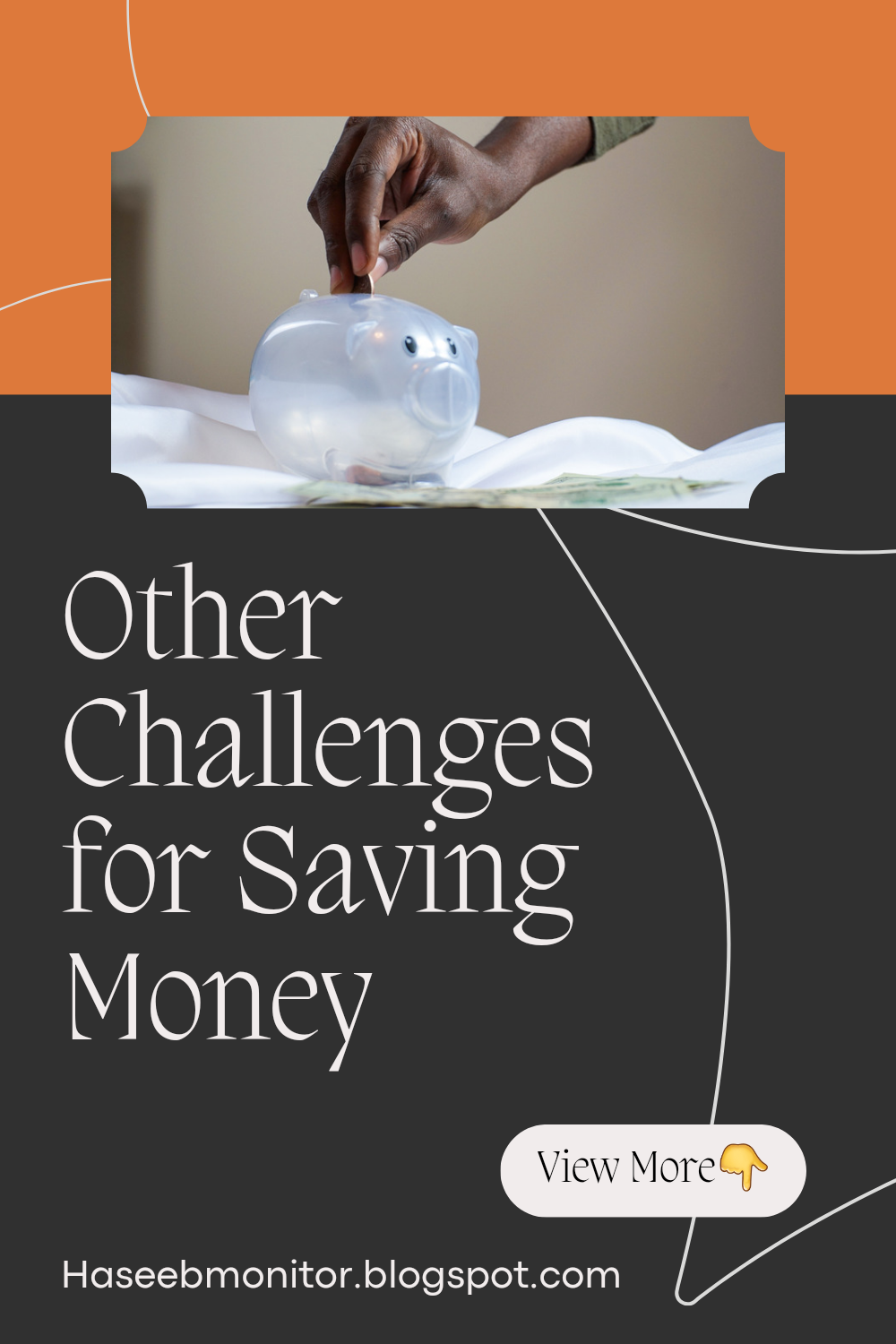The Ultimate Guide to Crushing Your Biweekly Money Saving Challenge
Bi weekly money saving challenge
Introduction
Saving money can sometimes feel like a daunting task, but with the right approach and a bit of discipline, anyone can achieve their financial goals. One effective method to boost your savings is by embarking on a biweekly money saving challenge. This article will guide you through the steps of this biweekly money saving challenge and provide practical tips to help you save more effectively
The Importance of Saving Money
1. **Financial Discipline:** Saving challenges instill discipline in your spending habits. They encourage you to set aside a portion of your income regularly, which can lead to better financial decisions overall.
2. **Building an Emergency Fund:** Saving money challenges often result in the accumulation of funds that can serve as an emergency fund. This financial safety net is crucial for unexpected expenses like medical bills or car repairs.
3. **Achieving Financial Goals:** Whether it's saving for a vacation, a down payment on a house, or paying off debt, saving challenges provide a structured approach to reaching specific financial goals.
4. **Creating a Habit:** Consistently participating in a saving challenge helps establish a savings habit. Over time, this habit becomes second nature, improving your financial well-being.
5. **Reducing Stress:** Knowing you have savings can reduce financial stress. It provides peace of mind, knowing that you have resources to fall back on when needed.
6. **Learning Budgeting Skills:** Saving challenges often require budgeting to ensure you meet your savings targets. This helps you become more aware of your spending and manage your finances better.
7. **Teaching Delayed Gratification:** Saving challenges teach the value of delayed gratification. You learn to prioritize long-term financial security over immediate spending impulses.
8. **Boosting Confidence:** Achieving savings milestones in a challenge can boost your financial confidence. This confidence can extend to other areas of your financial life.
9. **Creating a Financial Buffer:** Savings serve as a buffer against unexpected financial setbacks, helping you avoid going into debt or using high-interest credit options.
10. **Enhancing Financial Literacy:** As you engage in saving challenges, you'll likely learn more about personal finance, budgeting, and different ways to grow your savings.
Overall, saving money challenges are a practical and effective way to improve your financial health, develop smart money habits, and work towards your financial goals, regardless of your income level or financial situation.
Benefits of Biweekly Saving Challenges :
Engaging in a bi-weekly money saving challenge offers several benefits for your financial well-being:
1. **Consistency:** Bi-weekly challenges encourage regular savings, as you set aside money from every paycheck. This consistency helps build a stable financial foundation.
2. **Budgeting Skills:** To meet your savings goal, you'll likely need to create and stick to a budget. This improves your financial literacy and helps you manage your money more effectively.
3. **Emergency Fund:** Over time, the savings from a bi-weekly challenge can accumulate into a robust emergency fund. This fund provides a safety net for unexpected expenses and reduces financial stress.
4. **Achieving Financial Goals:** Whether it's saving for a vacation, a down payment on a home, or paying off debt, bi-weekly saving challenges provide a structured path to reaching your financial goals.
5. **Reducing Impulse Spending:** The discipline required to participate in a bi-weekly challenge can help curb impulsive spending habits, leading to more thoughtful financial decisions.
6. **Less Reliance on Credit:** Having savings means you're less likely to rely on credit cards or loans for unexpected expenses, reducing interest costs and debt.
7. **Improved Money Management:** Bi-weekly challenges encourage you to prioritize saving and allocate your income more wisely, improving your overall money management skills.
8. **Peace of Mind:** Knowing you have savings in place can provide peace of mind, knowing that you're financially prepared for unexpected situations.
9. **Financial Freedom:** As your savings grow, you gain more financial freedom and flexibility to make choices that align with your long-term goals and values.
10. **Financial Discipline:** Engaging in a bi-weekly challenge requires discipline and self-control, qualities that can positively impact other areas of your financial life.
11. **Long-Term Savings Habit:** Participating in a bi-weekly challenge can help establish a savings habit that lasts well beyond the duration of the challenge.
Overall, a bi-weekly money saving challenge can be a valuable tool for improving your financial health, creating financial security, and working towards your financial aspirations. It's a practical way to develop positive saving habits and achieve your financial goals.
Understanding Biweekly Saving Challenges
Bi-Weekly Money Saving Challenge
A bi-weekly money-saving challenge is a great way to build up savings incrementally. Here's a simple one you can try:
Decide on an amount to save with each paycheck. Let's say $50.
Every time you receive a paycheck, transfer the designated amount ($50) into a dedicated savings account
Keep track of your progress over time.
By consistently saving a fixed amount from each paycheck, you can gradually accumulate savings without feeling a significant impact on your day-to-day finances. Adjust the amount to match your budget and financial goals.
The Automated Transfer Challenge makes saving effortless and ensures that you consistently contribute to your savings goals. By automating your savings, you're more likely to stick to your financial plan and achieve your objectives over time
How it Differs from Traditional Saving Methods??
the biweekly money-saving challenge is a simple and flexible way to develop a regular savings habit, often used for short-term goals. Traditional savings plans offer more complexity, investment opportunities, and may be better suited for long-term financial objectives like retirement or education. The choice between them depends on your specific financial goals and preferences.
HOW TO DO A BIWEEKLY MONEY SAVING CHALLENGE?
Getting Started with Your Biweekly Saving Challenge
Setting a Goal
The first step in the biweekly money saving challenge is to set a realistic goal. Assess your financial situation and determine how much you can comfortably save each pay period. Setting a specific target will help you stay motivated throughout the challenge. Whether your goal is to create an emergency fund, save up for a dream vacation, or pay off debts, it's crucial to have a clear objective in mind.
Analyzing Expenses
Analyzing Your Income and Expenses To identify areas where you can cut back and save, it's important to conduct a thorough analysis of your expenses. Track your spending over a few weeks and categorize your expenses into different buckets. This will give you a comprehensive overview of where your money is going and highlight any areas where you may be able to make adjustments.. Analyzing Your Income and Expenses
▪︎ Saving Money through Smart Budgeting Techniques
Fixed Expenses
Start by examining your fixed expenses, such as rent or mortgage payments, utility bills, and insurance premiums. While these expenses are typically non-negotiable, it's still worth exploring ways to potentially reduce them. Consider refinancing your mortgage, switching to a more affordable insurance plan, or implementing energy-saving strategies to lower your utility bills.
Variable Expenses
Next, focus on your variable expenses, such as groceries, dining out, entertainment, and shopping. Look for opportunities to save in each category by setting realistic budget limits. Consider meal planning, cooking more meals at home, exploring free or low-cost entertainment options, and cutting back on unnecessary purchases. Small adjustments in these areas can add up significantly over time.
Creating a Budget
A crucial aspect of the biweekly money saving challenge is creating a budget that aligns with your savings goal. Start by listing your income and subtracting your fixed expenses. Allocate a portion of your remaining income to savings. This way, you'll prioritize saving before indulging in discretionary spending. Review your budget regularly to ensure you're staying on track and adjust as needed.
Automating Savings
One of the simplest and most effective ways to save consistently is by automating your savings. Set up automatic transfers from your checking account to a separate savings account on each payday. This removes the temptation to spend the money and ensures that you're consistently contributing to your savings goal. If your employer offers direct deposit, consider splitting your paycheck to allocate a specific percentage directly to savings.
Earning Extra Income to Boost Savings
A. Exploring Freelancing Opportunities many online websites apps are available for freelancing where you can do work as freelance and earn money online
B. Maximizing Your Skills for Side Jobs
C. Utilizing the Sharing Economy
Reducing Debt
Paying off debts, such as credit card balances and loans, is an essential part of the biweekly money saving challenge. High-interest debts can hinder your ability to save, so creating a plan to reduce them is vital. Focus on paying off debts with the highest interest rates first, while continuing to make minimum payments on other debts. As you eliminate debts, redirect the money you were paying towards them into your savings.
Staying Accountable
Accountability is key in any money saving challenge. Find a savings buddy or join an online community of like-minded individuals who are also participating in the biweekly money saving challenge. Share your progress, triumphs, and challenges with others. This support system will help keep you motivated, provide valuable advice, and make the process more enjoyable.
Celebrating Milestones and rewarding yourself
Throughout your biweekly money saving challenge, it's essential to celebrate milestones along the way. Whether you've reached a certain savings amount or achieved a specific financial goal, take the time to acknowledge your accomplishments. Treat yourself to something small, like a favorite meal or a relaxing activity, as a reward for your hard work. Celebrating milestones will help maintain your motivation and make the challenge more
▪︎ Maintaining Motivation throughout the Challenge
Reflecting on the Biweekly Saving Challenge
Periodically review your progress and adjust your strategy if necessary. Be flexible and willing to adapt to changes in your financial situation.
Assessing Your Achievements
▪︎Lessons Learned and Areas for Improvement
Work on your weakness and learn from your achievements
By following these steps, you can successfully complete a biweekly money-saving challenge and work toward your financial goals.
trackor for boost your money saving challenge
Bi-Weekly Money Saving Challenge You Should Try in 2023
! If you're looking for a fun and effective way to save money, consider taking on a bi-weekly money-saving challenge. These challenges not only help you develop a savings habit but also allow you to enjoy the process along the way. In this blog post, we will explore some exciting bi-weekly money-saving challenges that you can try in 2023. Are you ready to start your savings journey? Let's dive in!
Challenge 1: The Spare Change Challenge
Have you ever wondered how much spare change you accumulate over time? This challenge aims to put those pennies, nickels, dimes, and quarters to good use. Here's how it works:
Create a designated jar or container solely for collecting spare change.
At the end of every bi-weekly period, empty your wallet, pockets, and bags of any loose change and deposit it into the jar.
Commit to not using the change for any other purposes until the end of the year.
Repeat the process every two weeks, watching your savings grow.
To make the challenge even more exciting, involve your family or friends by turning it into a competition. Whoever saves the most spare change by the end of the year gets to treat themselves to a special reward!
Challenge 2: The $5 Bill Challenge
If you prefer paper money over coins, the $5 Bill Challenge might be the perfect fit for you. This challenge is all about setting aside every $5 bill you receive throughout the year. Here's how to get started:
Designate a specific envelope, money jar, or even a separate bank account for your $5 bills.
Whenever you receive a $5 bill as change or in any other form, deposit it immediately in your designated savings vessel.
Repeat this process every two weeks, resisting the temptation to spend those $5 bills.
By the end of the year, you'll be amazed at how much those seemingly insignificant $5 bills have accumulated. Once again, make it fun by involving friends or family members and see who ends up with the biggest stash!
Challenge 3: The Grocery Budget Challenge
When it comes to saving money, grocery expenses can be a significant drain on your budget. This challenge focuses on optimizing your grocery spending by setting a bi-weekly budget and sticking to it. Let's explore how to make the most of this challenge:
Start by evaluating your current grocery spending habits and determining a reasonable bi-weekly budget.
Plan your meals in advance, making a shopping list based on what you need for each meal.
When you head to the grocery store, prioritize sticking to your list and avoiding impulse purchases.
Throughout the two-week period, keep track of your grocery spending and adjust as necessary to stay within your budget.
Not only will this challenge help you save money, but it will also encourage healthier eating habits by promoting meal planning and conscious shopping.
Challenge 4: The No-Spend Challenge
Sometimes the best way to save money is by not spending it at all. The No-Spend Challenge encourages you to limit your discretionary spending for two weeks at a time. Here's how to take on this challenge:
Make a list of essential expenses such as rent, utilities, and groceries that cannot be avoided.
Identify non-essential spending categories, such as dining out, entertainment, or online shopping, which you will abstain from for the duration of the challenge.
Find free or low-cost alternatives for entertainment and activities, like exploring local parks, organizing game nights at home, or borrowing books or movies from the library.
Keep a journal or track your progress digitally to document your journey and reflect on any challenges or successes along the way.
The No-Spend Challenge not only helps you save money but also encourages creative thinking and resourcefulness.
Challenge 5: The Bill Negotiation Challenge
Are you tired of overpaying for your monthly bills? This challenge focuses on lowering your recurring expenses through negotiation. Here's how you can take charge of your bills:
Review your current bills, such as utilities, cable, internet, insurance, and phone plans.
Research the market to determine competitive rates and discounts available for similar services.
Contact your service providers and negotiate better rates or discounts, armed with the knowledge you've gathered.
Document your savings and keep track of any changes made to your bills.
By tackling this challenge every two weeks, you'll gradually reduce your monthly expenses and free up more money for savings or other financial goals.
Challenge 6: Envelope system challenge
The envelope system is a traditional and effective budgeting method that helps you manage your finances by using physical envelopes to allocate cash for various spending categories. Here's how to implement the envelope system:
1. **Identify Your Categories:** Determine the spending categories you want to budget for. Common categories include groceries, dining out, entertainment, transportation, and personal expenses.
2. **Allocate Funds:** Assign a specific amount of cash to each category based on your budget. For example, if you budget $200 for groceries and $100 for dining out each month, put $200 in one envelope labeled "Groceries" and $100 in another labeled "Dining Out."
3. **Use Cash for Expenses:** When you need to make a purchase in one of the budgeted categories, only use the cash from the corresponding envelope. This helps you avoid overspending in any category because once the cash is gone, you can't spend more until the next budgeting period.
4. **Track Expenses:** Keep a record of your spending for each category. You can use a notebook, smartphone app, or spreadsheet to track how much money you've spent from each envelope.
5. **Refill Envelopes:** At the beginning of each budgeting period (e.g., weekly or monthly), refill the envelopes with the allocated cash. Make any necessary adjustments based on your spending patterns and budgeting goals.
6. **Roll Over or Adjust:** If you have leftover money in an envelope at the end of a period, you can either roll it over to the next period or allocate it to another category where you may need more funds.
The envelope system is effective because it enforces strict budgeting discipline and helps you visualize your spending. It's especially useful if you want to control discretionary spending and avoid overspending in specific areas. However, it does require carrying and handling cash, so ensure you keep your envelopes in a secure place.
Challenge:7 The fixed percentage challenge
The Fixed Percentage Challenge is a straightforward and effective way to save money consistently. Here's how to implement it:
1. **Choose Your Percentage:** Decide on the percentage of your income you want to save with each paycheck. This could be 10%, 15%, 20%, or any amount that aligns with your financial goals.
2. **Calculate Your Savings:** Calculate the savings amount by applying your chosen percentage to your income. For example, if you earn $1,000 per paycheck and decide to save 15%, you would save $150 from each paycheck.
3. **Set Up an Automated Transfer:** To ensure you save the designated percentage every time you get paid, consider setting up an automated transfer from your checking account to a dedicated savings account. Many banks offer this feature, making it convenient and consistent.
4. **Monitor Your Progress:** Regularly review your savings account to track your progress. Over time, you'll see your savings grow as you consistently save a fixed percentage of your income.
5. **Adjust as Needed:** If your financial situation changes, such as a pay raise or a decrease in income, you can adjust the fixed percentage accordingly. The key is to maintain the habit of saving a portion of your income.
The Fixed Percentage Challenge is a simple yet effective way to prioritize savings and build a financial safety net over time. It's a smart way to ensure you're consistently working towards your goals.
other popular bi weekly money saving challenges
● Bowl grab challenge
● 52 week bi-weekly challenge
● $20 money-saving challenge
● 26 week bi-weekly money saving challenge
● trim 1% your salary challenge
Conclusion
Saving money doesn't have to be a difficult or boring task. The bi-weekly money-saving challenges mentioned here offer a range of strategies to make saving enjoyable and rewarding. Whether it's collecting spare change, setting aside $5 bills, optimizing your grocery budget, abstaining from non-essential spending, or negotiating better rates, these challenges provide tangible ways to enhance your financial well-being.
Remember, the key to succeeding in any challenge is consistency and discipline. Stay committed to your goals, and enjoy the process. As you witness your savings grow, you'll gain confidence and momentum to tackle larger financial goals in the future.
So why not kick off 2023 with one of these fun and engaging bi-weekly money-saving challenges? Start small, stay focused, and watch your savings soar!
FAQs
A. How do I choose the right biweekly saving plan for me?
Ans. To choose the right biweekly saving plan for you, consider your financial goals, risk tolerance, and investment horizon. Research and compare different plans, fees, and returns before making a decision.
B. What are some easy ways to cut down on expenses?
Ans. To cut down on expenses, consider these easy steps: create a budget, reduce discretionary spending, shop smart (use coupons and compare prices), eliminate unused subscriptions, and cook at home more often.
C. How can I stay motivated throughout the saving challenge?
Ans. Stay motivated during a savings challenge by setting clear goals, tracking progress, rewarding yourself for milestones, and visualizing the benefits of your savings.
D. What should I do with my savings once the challenge is over?
Ans. After a savings challenge, consider investing the money, paying off debt, or using it to achieve a specific financial goal, like an emergency fund or a vacation.


















No comments:
Post a Comment